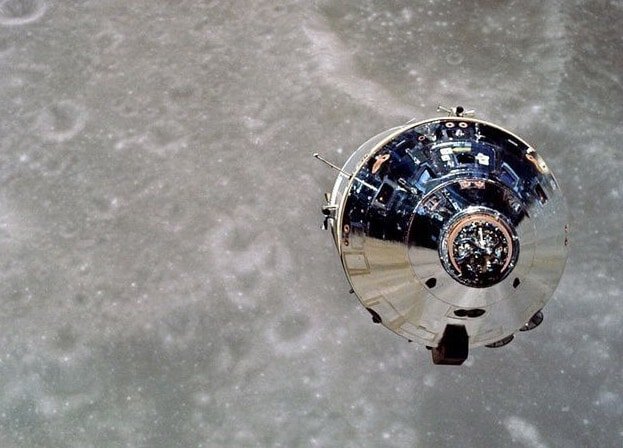
A Smithsonian Curator Reflects on Apollo 10, the Mission That Made Landing on the Moon Possible
by Jay Bennett Smithsonian.com
“I keep telling Neil Armstrong that we painted that white line in the sky all the way to the moon down to 47,000 feet so he wouldn’t get lost, and all he had to do was land. Made it sort of easy for him.”
So said Eugene Cernan, the last human to set foot on the moon, and before that, the lunar module pilot of Apollo 10. Along with commander Thomas Stafford and command module pilot John Young, Cernan crewed the critical dress rehearsal, the mission to do “everything but land.”
Apollo 10 will forever serve as the crux between two of the most extraordinary accomplishments in human history: the first flight to the moon on Apollo 8, and of course, Neil Armstrong and Buzz Aldrin’s first steps on the lunar surface during Apollo 11. The mission was the last chance to test the critical hardware and software that would take people to the moon, including the all-important lunar module, which was making its first trip to lunar orbit. On the next, it would land.

Carol graduated from Riverside White Cross School of Nursing in Columbus, Ohio and received her diploma as a registered nurse. She attended Bowling Green State University where she received a Bachelor of Arts Degree in History and Literature. She attended the University of Toledo, College of Nursing, and received a Master’s of Nursing Science Degree as an Educator.
She has traveled extensively, is a photographer, and writes on medical issues. Carol has three children RJ, Katherine, and Stephen – one daughter-in-law; Katie – two granddaughters; Isabella Marianna and Zoe Olivia – and one grandson, Alexander Paul. She also shares her life with her husband Gordon Duff, many cats, and two rescues.
ATTENTION READERS
We See The World From All Sides and Want YOU To Be Fully InformedIn fact, intentional disinformation is a disgraceful scourge in media today. So to assuage any possible errant incorrect information posted herein, we strongly encourage you to seek corroboration from other non-VT sources before forming an educated opinion.
About VT - Policies & Disclosures - Comment Policy




NASA is trying to develope an Orion space module that can allow humans to survive the Van Allen Belt radiation.
Comments are closed.